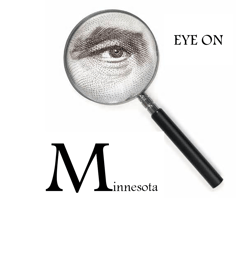
The Minnesota sales and use tax is imposed on taxable retail sales of tangible personal property and certain services.
The statewide general tax rate is 6.875% - and if you happen to be around on July 1, 2034, the rate is scheduled to go down to 6.5%.
So just hold off a bit longer on that expensive purchase.
A political subdivision can impose a general sales tax under:
(1) the metropolitan transportation area sales tax,
(2) the greater Minnesota transportation sales and use tax, (3) if permitted by special law, or
(4) if the political subdivision enacted and imposed the tax before the effective date of Minn. Stat. §477A.016 (enacted in 1981) or its predecessor.
The 10 biggest cities in Minnesota, according to the 2010 census, are: Minneapolis; St. Paul; Rochester; Duluth; Bloomington; Brooklyn Park; Plymouth; St. Cloud; Eagan; and Woodbury.
Of these 10 big cities, only the following impose state-administered sales taxes: Duluth, Minneapolis, Rochester, and St. Paul. The rest of the top 10 cities do not impose sales taxes.
Clothing is generally exempt from the Minnesota state and local sales and use tax. We say “generally exempt” as there are certain items that do not qualify as clothing, such as:
- Belt buckles sold separately.
- Costume masks sold separately.
- Patches and emblems sold separately.
- Sewing equipment and supplies, including but not limited to, knitting needles, patterns, pins, scissors, sewing machines, sewing needles, tape measures, and thimbles (but see special exemption explained herein).
- Sewing materials that become part of clothing, including but not limited to, buttons, fabric, lace, thread, yarn, and zippers.
- Clothing accessories or equipment. “Clothing accessories or equipment” means incidental items worn on the person or in conjunction with clothing. Clothing accessories and equipment include, but are not limited to, briefcases; cosmetics; hair notions, including barrettes, hair bows, and hairnets; handbags; handkerchiefs; jewelry; nonprescription sunglasses; umbrellas; wallets; watches; and wigs and hairpieces.
- Sports or recreational equipment. “Sports or recreational equipment” means items designed for human use and worn in conjunction with an athletic or recreational activity that are not suitable for general use. Sports and recreational equipment includes, but is not limited to, ballet and tap shoes; cleated or spiked athletic shoes; gloves, including but not limited to, baseball, bowling, boxing, hockey, and golf gloves; goggles; hand and elbow guards; life preservers and vests; mouth guards; roller and ice skates; shin guards; shoulder pads; ski boots; waders; and wetsuits and fins.
- Protective equipment. “Protective equipment” means items for human wear and designed as protection of the wearer against injury or disease or as protection against damage or injury of other persons or property but not suitable for general use. Protective equipment includes, but is not limited to, breathing masks; clean room apparel and equipment; ear and hearing protectors; face shields; finger guards; hard hats; helmets; paint or dust respirators; protective gloves; safety glasses and goggles; safety belts; tool belts; and welder’s gloves and masks.
And just when you thought it was straight forward to comply with Minnesota sales and use taxes:
Vendors with liability of $250,000 or more for a fiscal year ending June 30 must make an accelerated payment for the June liability for the next year as follows: 81.4% of the estimated June liability is due two business days before June 30, and the remaining amount of the June liability is due on August 20.
Stay tuned for more of Jeff's EYE ON series as he blogs aboout sales and use tax State by State



